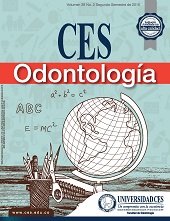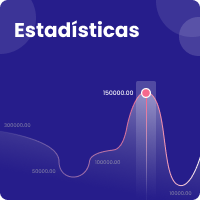Conocimiento de la microbiota de la cavidad oral a través de la metagenómica
Resumen
La microbiota oral es uno de los ecosistemas microbianos más antiguos en ser reconocido, y su descripción inicia en 1863 cuando Anton van Leeuwenhoek observa por primera vez en el microscopio a estos microorganismos en placas dentales. En la actualidad, las técnicas de secuenciación y el análisis del genoma a gran escala ha permitido construir bases de datos genómicas, realizar linajes microbianos específicos y conocer que no solamente hacen parte de la microbiota oral humana unos 600 o 700 taxones, sino que se estima que el número de filotipos podrían estar en alrededor de 19000. Todo este conocimiento es en una herramienta valiosa para la identificación correcta de las bacterias que están involucradas en complejas biopelículas orales y nos facilitaría así comprender su potencial genético. Además, nos permitiría entender y dilucidar mejor la patología oral, y conocer si los cambios que predisponen a la enfermedad ocurren primero en el huésped o por el contrario a nivel microbiano. En conclusión, el estudio del metagenoma de la microbiota no solo de la cavidad oral es clave para la creación de herramientas diagnósticas y terapéuticas que repercutirán en la calidad de vida de los pacientes. Esta revisión pone en contexto lo que se ha publicado en los últimos años en este tema.
Knowledge of the microbiota of the oral cavity through the metagenomic
The oral microbiota is one of the oldest microbial ecosystems recognized. The oral microbiota description began in 1863 when Anton van Leeuwenhoek observed, using the microscope, microorganisms in dental plaque. Recently, DNA sequencing and genome analysis have allowed researchers to build large-scale genomic databases, characterize specific microbial lineages, and discover that the human oral microbiota is compose by approximately 600 to 700 taxa and 19000 phylotypes. All this knowledge is a valuable tool for the precise identification of the bacteria that are involved in complex oral biofilms. In addition, the characterization of oral microbiota will allow us to understand different oral pathologies, and to know whether changes that predispose to a disease, occur first in the host or conversely at the microbial level. In conclusion, the study of the metagenome of the oral cavity microbiota is key to develop new diagnostic and therapeutic tools that will improve the quality of the patients life. This review puts into context what has been published in recent years on this subject.
Key words:
Oral microbiota, metagenomics, oral cavity, dental plaque.
Descargas
Referencias bibliográficas
2. Walker AW, Duncan SH, Louis P, Flint HJ. Phylogeny, culturing, and metagenomics of the human gut microbiota. Trends Microbiol. 2014;22(5):267-274.
3. Zaura E, Keijser BJF, Huse SM, Crielaard W. Defining the healthy «core microbiome» of oral microbial communities. BMC Microbiol. 2009;9:259.
4. Sampaio-Maia B, Monteiro-Silva F. Acquisition and maturation of oral microbiome throughout childhood: An update. Dent Res J. 2014;11(3):291-301.
5. Díaz Zúñiga J, Yáñez Figueroa J, Melgar Rodríguez S, Álvarez Rivas C, Rojas Lagos C, Vernal Astudillo R. Virulencia y variabilidad de Porphyromonas gingivalis y Aggregatibacter actinomycetemcomitans y su asociación a la periodontitis. Rev. Clin. Periodoncia Implantol. Rehabil. Oral. 2012; 5(1); 40-45.
6. Morgan XC, Huttenhower C. Chapter 12: Human microbiome analysis. PLoS Comput Biol. 2012;8(12):e1002808.
7. Gilbert JA, Dupont CL. Microbial metagenomics: beyond the genome. Annu Rev Mar Sci. 2011;3:347-371.
8. Avila M, Ojcius DM, Yilmaz O. The oral microbiota: living with a permanent guest. DNA Cell Biol.2009;28(8):405-411.
9. Carroll IM, Threadgill DW, Threadgill DS. The gastrointestinal microbiome: a malleable, third genome of mammals. Mamm Genome Off J Int Mamm Genome Soc. 2009;20(7):395-403.
10. Barroso E. Interacciones de los polifenoles del vino con microbiota de la cavidad bucal [Internet]. Universidad Autónoma de Madrid; 2011 [citado 24 de agosto de 2014]. Recuperado a partir de: http://hdl.handle.net/10261/60946
11. Pushalkar S, Ji X, Li Y, Estilo C, Yegnanarayana R, Singh B, et al. Comparison of oral microbiota in tumor and non-tumor tissues of patients with oral squamous cell carcinoma. BMC Microbiol. 2012;12:144.
12. Jenkinson HF, Lamont RJ. Oral microbial communities in sickness and in health. Trends Microbiol. 2005;13(12):589-595.
13. Luo AH, Yang DQ, Xin BC, Paster BJ, Qin J. Microbial profiles in saliva from children with and without caries in mixed dentition. Oral Dis.2012;18(6):595-601.
14. Hyde ER, Andrade F, Vaksman Z, Parthasarathy K, Jiang H, Parthasarathy DK, et al. Metagenomic analysis of nitrate-reducing bacteria in the oral cavity: implications for nitric oxide homeostasis. PloS One. 2014;9(3):e88645.
15. Latorre-Castillo A, D'Auria G, Peris-Bondia F. Fraccionando la microbiota gastrointestinal humana [Internet]: universitat de Valéncia; 2012. http://roderic.uv.es/handle/10550/24147
16. Chen T, Yu W-H, Izard J, Baranova OV, Lakshmanan A, Dewhirst FE. The Human Oral Microbiome Database: a web accessible resource for investigating oral microbe taxonomic and genomic information. Database J Biol Databases Curation. 2010;2010:baq013.
17. Zaura E. Next-generation sequencing approaches to understanding the oral microbiome. Adv Dent Res.2012;24(2):81-85.
18. Peterson SN, Snesrud E, Schork NJ, Bretz WA. Dental caries pathogenicity: a genomic and metagenomic perspective. Int Dent J.2011;61 Suppl 1:11-22.
19. Kolenbrander PE, Palmer RJ, Rickard AH, Jakubovics NS, Chalmers NI, Diaz PI. Bacterial interactions and successions during plaque development. Periodontol 2000. 2006;42:47-79.
20. Nyvad B, Crielaard W, Mira A, Takahashi N, Beighton D. Dental caries from a molecular microbiological perspective. Caries Res. 2013;47(2):89-102.
21. McLean JS. Advancements toward a systems level understanding of the human oral microbiome. Front Cell Infect Microbiol. 2014;4:98.
22. Alcaraz LD, Belda-Ferre P, Cabrera-Rubio R, Romero H, Simón-Soro A, Pignatelli M, et al. Identifying a healthy oral microbiome through metagenomics. Clin Microbiol Infect Off Publ Eur Soc Clin Microbiol Infect Dis.2012;18 Suppl 4:54-57.
23. Jorth P, Turner KH, Gumus P, Nizam N, Buduneli N, Whiteley M. Metatranscriptomics of the human oral microbiome during health and disease. mBio. 2014;5(2):e01012-4.
24. Soro V, Dutton LC, Sprague SV, Nobbs AH, Ireland AJ, Sandy JR, et al. Axenic Culture of a Candidate Division TM7 Bacterium from the Human Oral Cavity and Biofilm Interactions with Other Oral Bacteria. Appl Environ Microbiol. 2014;80(20):6480-6489.
25. Genti S. Metagenomics: beyond the genome of the microorganisms. Bitácora digital [Internet]. 2013 [citado 25 de agosto de 2014]; Recuperado a partir de: www.revistas.unc.edu.ar/index.php/Bitacora/article/download/.../6031
Descargas
Publicado
Cómo citar
Número
Sección
| Estadísticas de artículo | |
|---|---|
| Vistas de resúmenes | |
| Vistas de PDF | |
| Descargas de PDF | |
| Vistas de HTML | |
| Otras vistas | |



